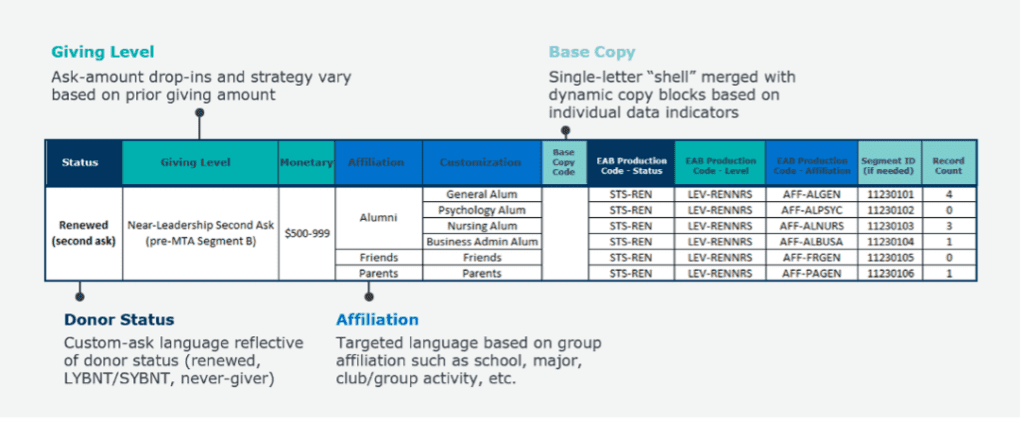Your guide to a successful year-end annual giving campaign
As you settle into the fall term and new academic year, it’s time to focus on a crucial task: your year-end giving campaign. These campaigns hold immense potential within your annual giving strategy, but their success hinges on effective execution.
The end of year marks a time of reflection and gratitude, which inspires many people to support their favorite nonprofits and causes. But with virtually every mission-driven organization launching a year-end campaign, how do you stand out from the crowd? Keep reading to learn how to finish the calendar year on a high note.
Why Launch a Year-End Giving Campaign?
Let’s start with why a year-end giving campaign is such a powerful component of your annual giving program.
Capitalize on giving season momentum
November and December are often referred to as giving season, a time of year when most U.S. adults are willing and ready to give back to charitable organizations. It’s key to capitalize on this built in momentum to ensure your institution is top of mind when donors are ready to give.
-
69%
of U.S. adult citizens say they donate money to charitable causes or organizations.
Capture donors ready to give for tax reasons
Many donors are drawn to give back at the close of the year due to the tax benefits they gain. When individuals donate before the year ends, their contribution becomes tax-deductible. This reduces their taxable income in the coming spring.
Maintain momentum towards your goals
A successful year-end campaign ensures you are keeping progress with your fiscal year revenue goals. To stay on track, institutions should raise 65% of their fundraising revenue before December 31. Meaning year-end campaigns can provide the perfect opportunity to give your fundraising efforts a needed boost or close any revenue gaps.
5 Tips for a Successful Campaign
So, given how critical year end campaigns are, how do you do them right?
1. Understand your audiences and personalize each segment.
Before embarking on your year-end campaign, it’s essential to segment your audiences. Doing so allows you to craft a more compelling campaign tailored to their unique aspirations and motivating factors. Maybe you want to reach your older alumni through a direct mail appeal or more recent Gen Z alumni through a video series deployed on social media platforms. But personalization goes a step further than just understanding the channels for deployment. Use the historical and trend data available at your institution to understand what motivates your donors. If they have a track record of donating to academic departments, make sure they have that opportunity even in broad-based appeals. If they have previously donated a student scholarship fund, solicit them accordingly. The more your donor feels as though they’re seen and understood by your institution and not just part of the masses, the more likely they may be to donate.
80% of donors prefer to receive at least one form of personalized content. You can personalize your communications in many ways. Through donor type, institution affiliation, giving levels, past behavior, and known interests – the more you can personalize, the better.

2. Craft a stand-out value proposition.
In a landscape brimming with year-end initiatives, your campaign must feature a compelling value proposition in order to stand out from the crowd. More than ever, donors want to give their dollars to organizations with an important cause, making it imperative that you build a strong case around why it’s important to donate to your institution. Lean in on the success and value your institution brings to each individual student and the greater community. Communicate the impact of donations in a way that resonates emotionally and tangibly. When donors see the distinctive value their contribution will bring, your campaign has a better chance of being successful.
TIPS FOR CRAFTING AND COMMUNICATING YOUR VALUE
3. Be omnipresent.
Visibility is everything. Strategically deploy your campaign across multiple platforms to capture your audience’s attention at various touchpoints. We know that on average donors need eight different touchpoints before they make their first gift. Deploying a strategy that engages them through different avenues such as email, social media, digital ads, direct mail, etc. has a stronger likelihood of increasing conversion rates. Remember that during the year-end campaign cycle, your target donors are seeing content from an array of charitable causes.
-
Re-think Your Strategy
According to EAB partner data, 85% of alumni can be reached via an omnichannel digital strategy versus just 50% with an email campaign. Explore the benefits of a robust digital strategy.
4. Create a sense of urgency.
Urgency is a potent catalyst for action. Convey the time-sensitive nature of your year-end campaign through direct calls to action and countdowns. Illustrate the finite window of opportunity for donors to make a difference and be part of something impactful. A genuine sense of urgency nudges potential donors towards swift, decisive action. Frame your value proposition with a sense of urgency by explaining to donors why right now is the most crucial time to donate to your institution. Without clear goals and deadlines, people are inclined to procrastinate.
5. Define how you will collect data and measure success.
Finally, a key part of a successful year-end giving campaign is having a roadmap to success. Establish clear and quantifiable metrics that align with your campaign and institution’s objectives and consider the specific goals you’ve set—whether it’s increasing donor participation, reaching a fundraising milestone, or enhancing engagement. Identify the data points that directly reflect progress toward these goals, such as donation amounts, donor retention rates, website traffic, or social media engagement. Leverage technology to track and consolidate relevant data across various channels, ensuring a comprehensive view of your campaign’s performance. As the campaign unfolds, regularly monitor these metrics and evaluate their trajectory against your defined targets. Adjust your approach as needed to optimize outcomes.
A Powerful Tool for Impact
In conclusion, a year-end campaign is more than just a repeated annual tactic; it’s a powerful tool for driving real impact and success for your annual giving program. When executed effectively, it can lead to a positive experience for your donors and alumni, and help you keep on pace with your fiscal year fundraising goals.
-
Advancement Marketing Services
A partnership with EAB’s Advancement Marketing Services means you have a dedicated team of experts to help you reach your goals and keep up with the evolving trends and behaviors of donors. Explore how you can partner with AMS to expand and elevate your annual giving program. Click here to learn more.
More Blogs

The old advancement staffing model no longer works

How to grow your donor pipeline in today's climate
